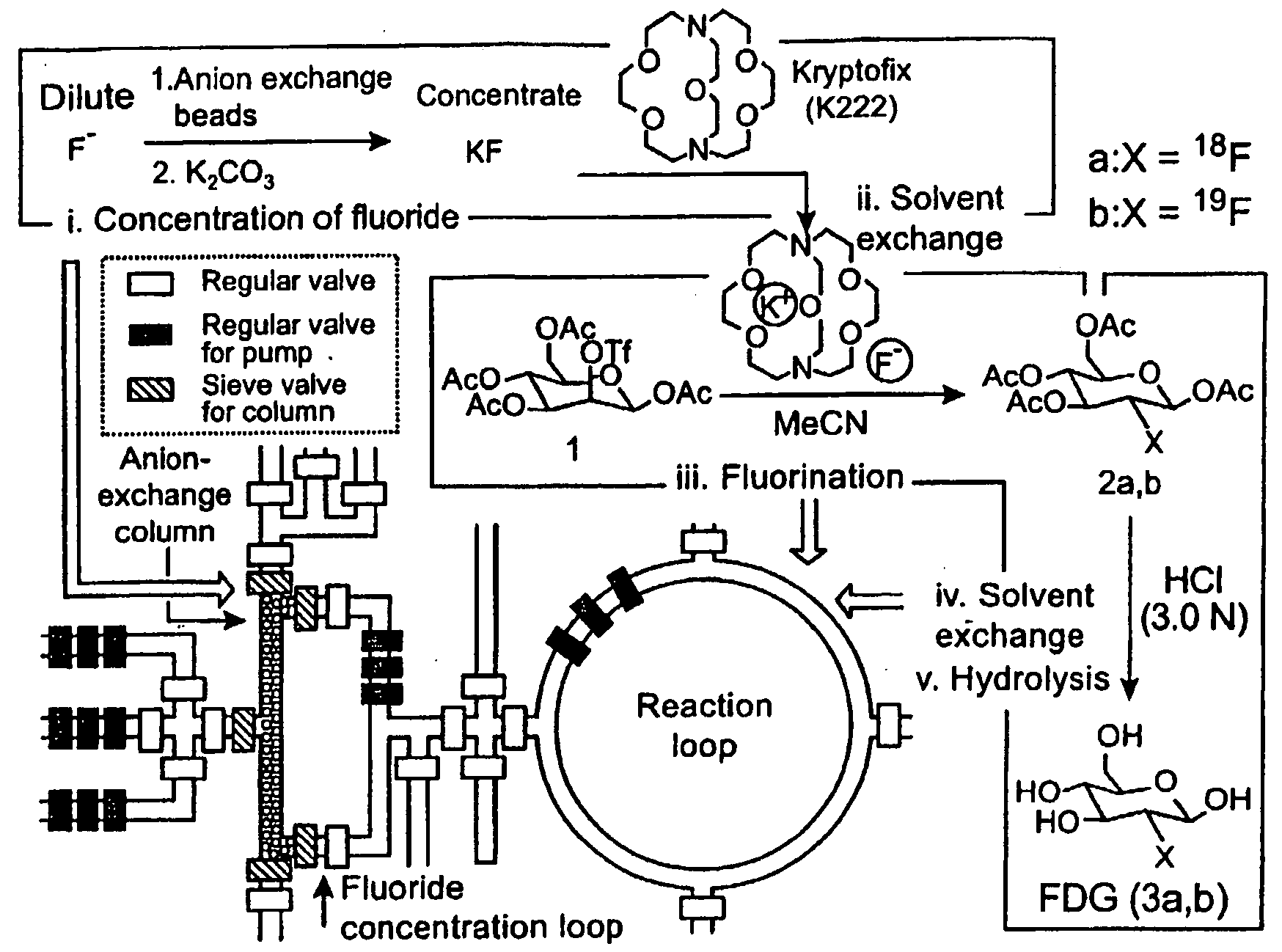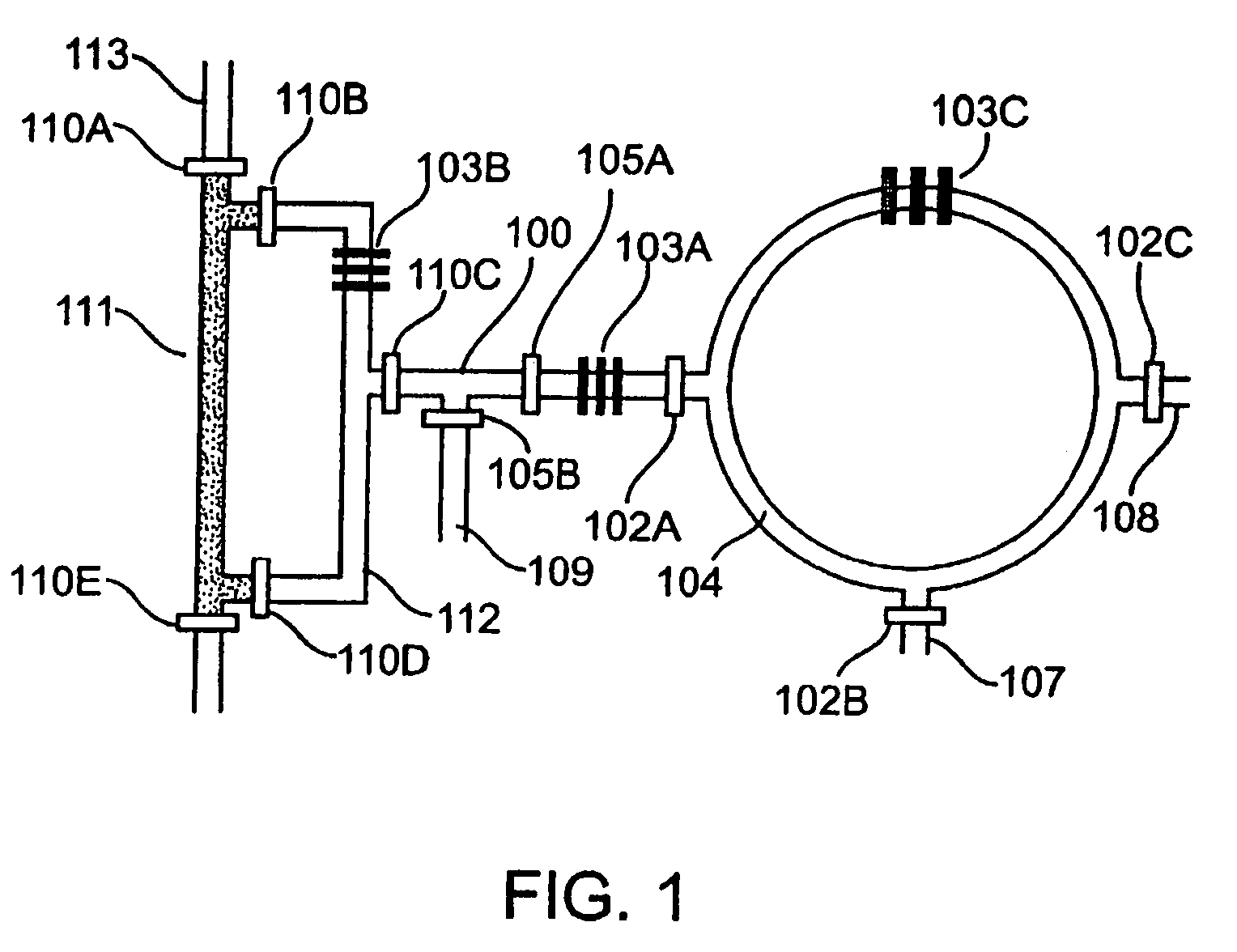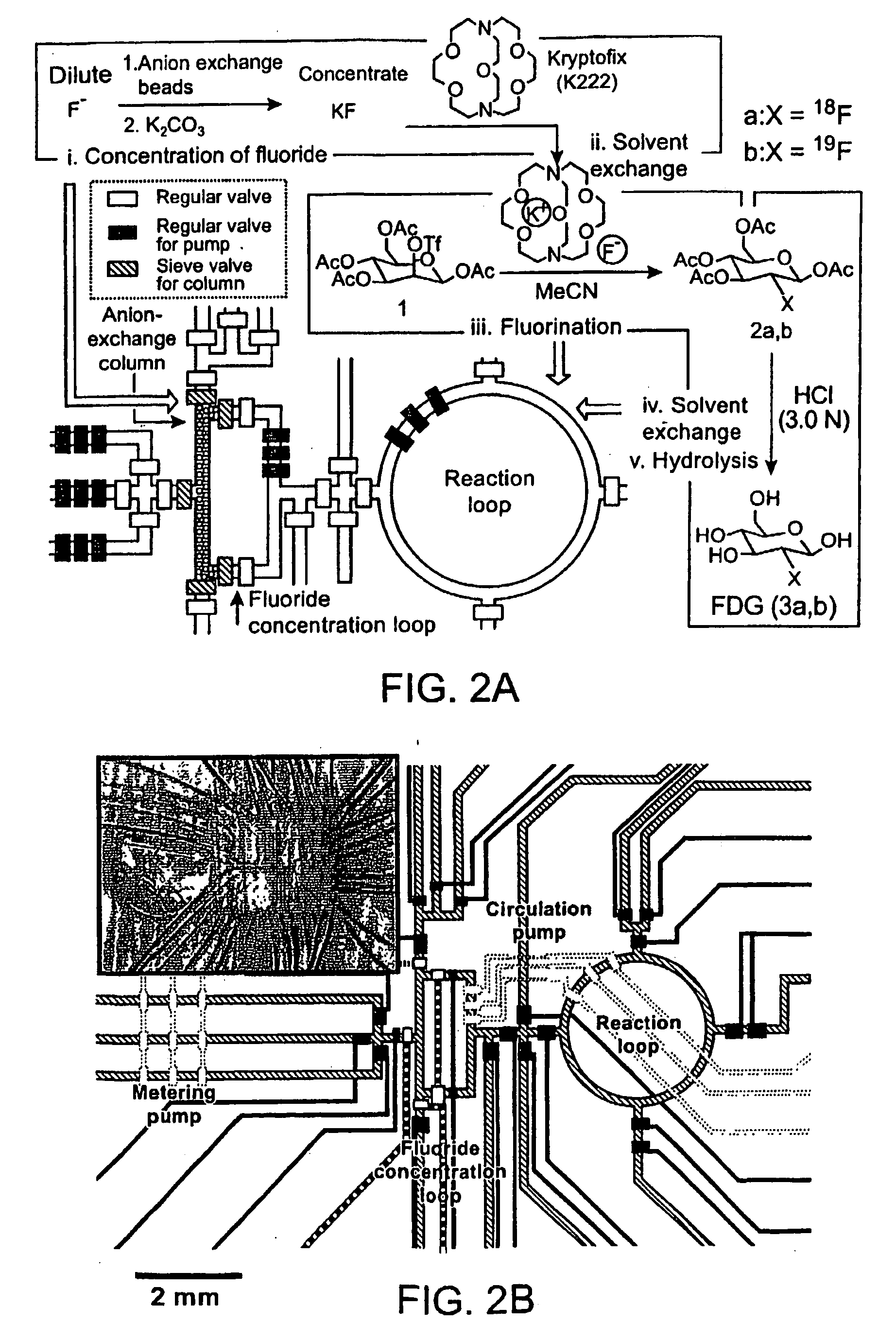Microfluidic Chemical Reaction Circuits
a chemical reaction circuit and microfluidic technology, applied in the direction of liquid-gas reaction process, chemical/physical/physical-chemical stationary reactor, ion-exchange treatment of water/sewage, etc., can solve the problems of inability to confine each individual step, poor overall performance, and considerable challenges in applying microfluidic technology to sequential syntheses
- Summary
- Abstract
- Description
- Claims
- Application Information
AI Technical Summary
Benefits of technology
Problems solved by technology
Method used
Image
Examples
example 1
Synthesis of [19F]FDG
[0244]The molecular imaging probe 2-deoxy-2-[18F]fluoro-D-glucose ([18F]FDG) is a widely used radiopharmaceutical with over a million patient doses produced in 2004 for use in positron emission tomography (PET) imaging studies. The short half-life of [18F]fluorine makes rapid synthesis of doses essential, and the synthetic process includes common steps required in many chemical syntheses, including the preparation of other radiolabeled molecular imaging probes. The nanogram mass of PET molecular imaging probes administered to subjects is ideal for miniaturized architecture of integrated microfluidics. Thus, the multi-step synthesis of [18F]FDG (see Hamacher et al., 1986, J. Nuclear Medicine 27:235) and other PET probes represents an interesting opportunity for integrated microfluidics chips.
[0245]The synthesis of [18F]FDG (3a) is based on 5 sequential chemical processes (FIG. 2A): (i) concentration of the dilute [18F]fluoride solution (1-10 ppm) obtained from th...
example 2
Synthesis of [18F]FDG
[0249]Radioactive [18F]FDG (3a) was produced in the CRC by starting from radioactive [18F]fluoride obtained from proton-bombarded [18O]water. In this experiment, only 720 μCi of [18F]fluoride (limiting reagent) in ca. 1 μL of [18O]water was used, in an automated fashion. Because of the relative high loading rate (ca. 65 nL / sec) applied, only 500 μCi of [18F]fluoride was trapped in the column; the subsequent chemical steps to produce [18F]FDG (3a) were completed within 14 min to obtain 190 μCi product 3a having a radiochemical yield of 38% and a radiochemical purity of 97.6%, according to radio-TLC analysis (FIG. 10). Similar results were observed across multiple runs.
Materials and Methods
[0250]Fabrication of the first generation CRC. The chip was fabricated using multi-layer soft lithography method. (McDonald et al., 2000, Electrophoresis 21:27; Unger et al. 2000, Science 288:113.) Two different molds were first fabricated by photolithographic processes to creat...
example 3
Second Generation CRC
[0260]This example describes a second generation CRC with the capacity to synthesize larger [18F]FDG (3a) doses. This chip has a coin-shaped reactor (5 μL volume) equipped with a vacuum vent. It was used to synthesize 1.74 mCi [18F]FDG (3a) sufficient for several mouse imaging experiments. From the purified and sterilized product (FIG. 5A), two doses (375 μCi and 272 μCi) were used for microPET- and microCT-based molecular imaging of two mouse models of cancer. Devices of this type can be used to synthesizing PET imaging agents on 100 mCi scale.
[0261]Fabrication of the second generation CRCs. The second generation CRCs (FIG. 11) were manufactured by a soft lithography method similar to the one described above. (Fabricated at Fluidigm Corp.) The main differences are (i) a third vent layer is located above the fluidic and control layers, (ii) all three layers of the CRC were made from 10:1 A / B PDMS and are held together by placing a 1-μm thick layer of PDMS B comp...
PUM
| Property | Measurement | Unit |
|---|---|---|
| Fraction | aaaaa | aaaaa |
| Volume | aaaaa | aaaaa |
| Volume | aaaaa | aaaaa |
Abstract
Description
Claims
Application Information
 Login to View More
Login to View More - R&D
- Intellectual Property
- Life Sciences
- Materials
- Tech Scout
- Unparalleled Data Quality
- Higher Quality Content
- 60% Fewer Hallucinations
Browse by: Latest US Patents, China's latest patents, Technical Efficacy Thesaurus, Application Domain, Technology Topic, Popular Technical Reports.
© 2025 PatSnap. All rights reserved.Legal|Privacy policy|Modern Slavery Act Transparency Statement|Sitemap|About US| Contact US: help@patsnap.com



